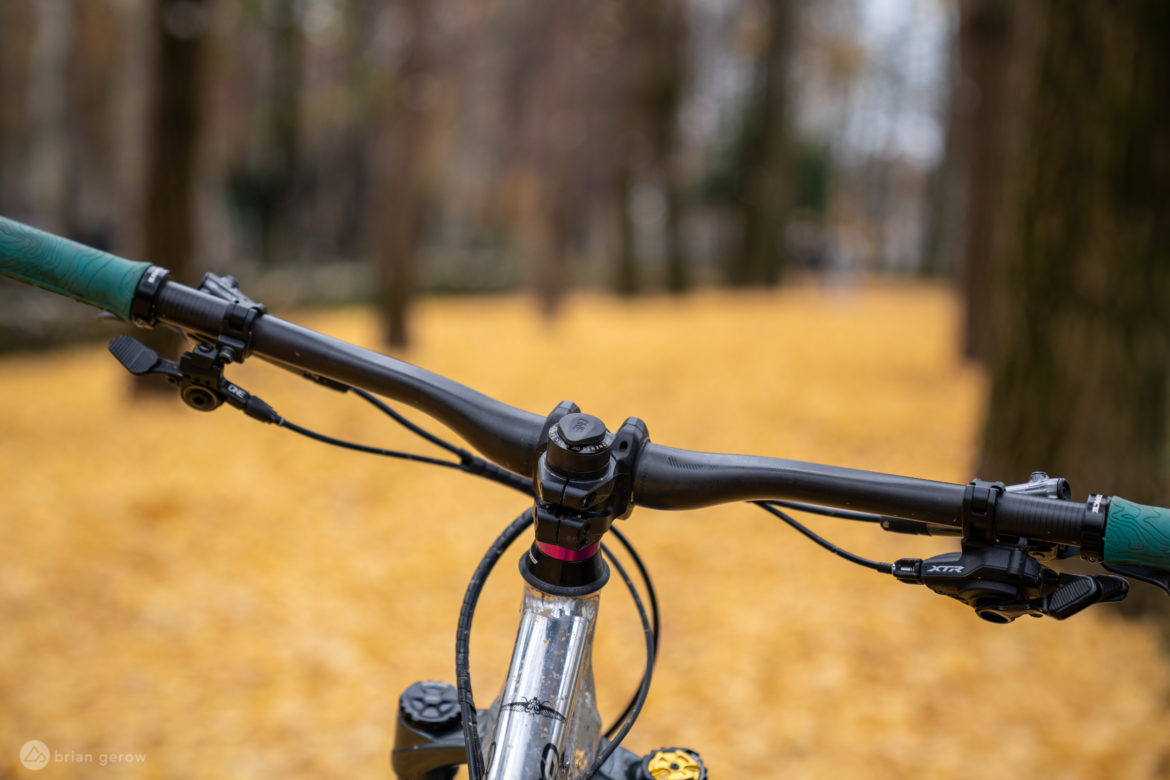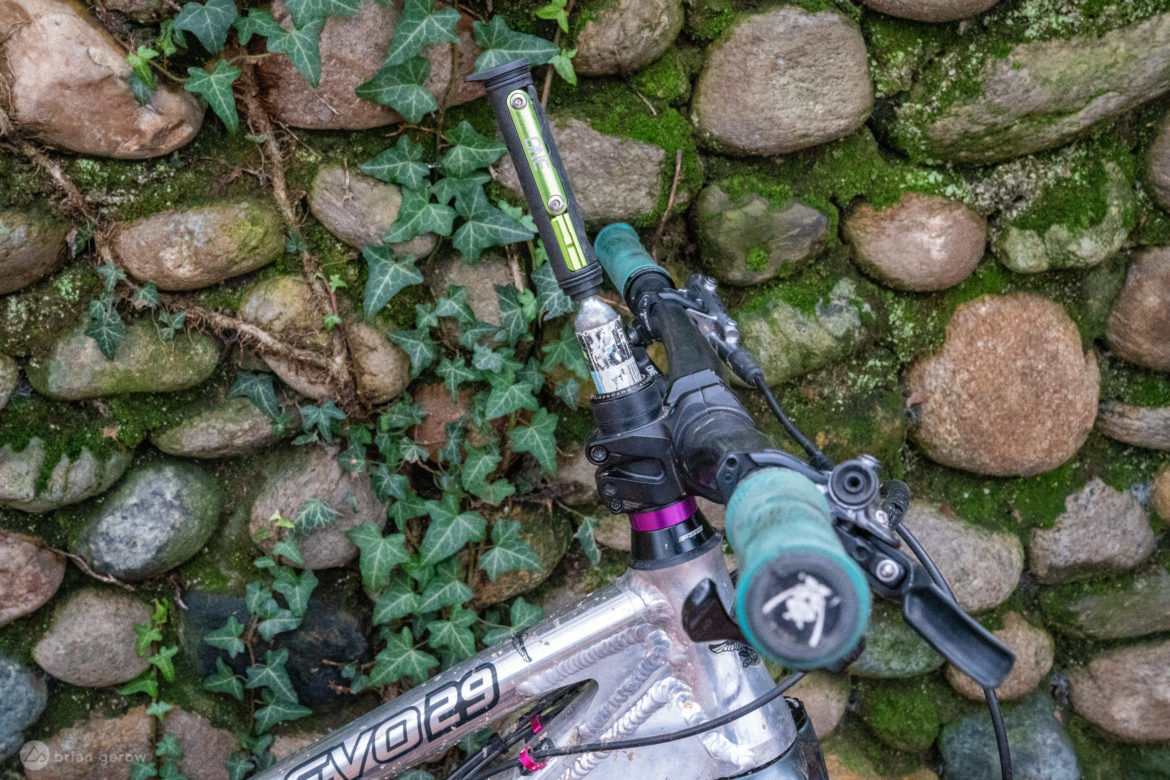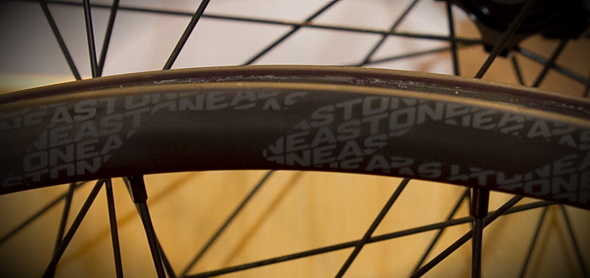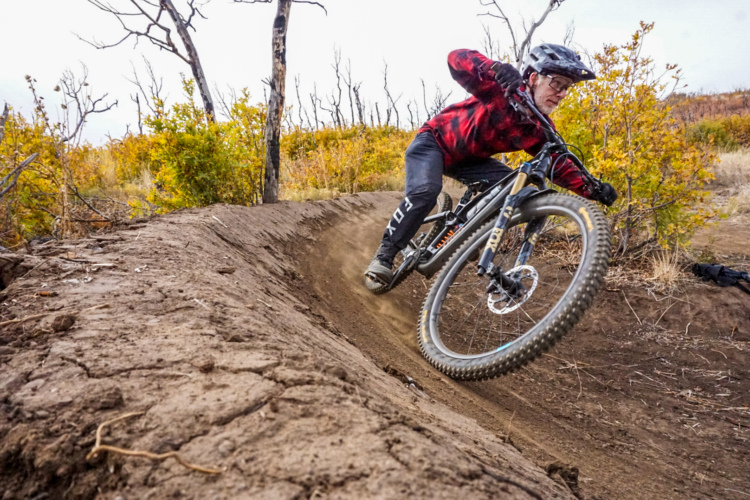
Hitting the trail without a backpack or hip-pouch has become my short-ride rule these days since there are plenty of ways to stash everything I may need on my bike or in my pockets. When OneUp first introduced their Every Day Carry (EDC) tool system a few years back I was excited by the Go-Go-Gadget nature of the contraption, and the ability to carry one less thing in my trousers. That excitement ebbed somewhat when I realized that I would have to thread the fork steerer. Voiding the warranty for my most expensive bike component did not seem like a brilliant plan. After some deliberation, I went ahead and threaded the tube, and the system worked flawlessly thereafter. The even better news is the latest EDC Stem foregoes that pesky threading and voiding altogether.
EDC Stem and its preload prowess

OneUp has solved the warranty-voiding issue with their new EDC Stem that includes a built-in preload adjustment. You no longer need to thread the steerer, nor insert a starnut. I will save the long-form explanation on how to install the stem for folks who buy one, and simply say that it is a relatively quick and clear process.
In short, with the stem preloader assembled, slide the greased cone washer over the steerer, then slide the stem into place. Next, remove most of the headset slack by pressing down on the bars and tightening the stem in place. This is the difficult element of the install, as you have to align the bars with the front wheel while pressing down on them and then tightening the stem bolts to maintain that tension while you move on to the next step. It’s good to have three hands for this bit, so start growing an extra appendage, or phone a friend.
From there, tighten the 3mm hex bolt on the stem’s lower right side to achieve the desired bearing preload, and finally, lightly tighten the 4mm nut on the left side to keep everything in place. This all may sound über complex, but it should take any seasoned bike mechanic roughly the same amount of time to install as a stem with a traditional top-cap.

Preload with the 3mm bottom bolt here first. 
Then the opposite 4mm bottom bolt to hold it steady.
With the EDC Stem installed, everything works like a traditional cockpit setup. Well, almost everything. If your steerer tube extends beyond the top of your stem you will need to use OneUp’s proprietary spacers that snap together, since there is no top cap to hold them in place. The OneUp cap then snaps into the top spacer, and finally, the tool slides inside. Your ordinary stem spacers will work fine beneath the stem.
- Price $85 (EDC tool not included) compare prices
- Weight 157g (35mm tested)
- Lengths 35mm or 50mm
- Bar diameter 35mm only, 0° rise
I experienced an issue early on with the snap-together spacers sliding apart when I removed my EDC tool. This isn’t a huge deal, as they can easily be reattached to the stem, but it would be nice if they stayed put. I managed to eschew this issue, for the most part, by twisting the tool while removing it instead of only pulling up on the handle.

Spacers and cap ejecting is not ideal. 
That’s better.
The EDC Stem’s preload system also served up some initial hassle. No matter how tightly I secured the stem bolts, my headset crept loose on a few occasions. With new headset bearings and a properly installed stem, I deduced that my stem was slowly creeping up the steerer. OneUp’s original system, like a traditional starnut configuration, maintains the preload above the stem, preventing the stem from migrating on the fork’s steerer.
I contacted OneUp to find out what I was doing wrong, and they offered some helpful suggestions that remedied the issue. Their suggestions were threefold:
1. Make sure you grease both mating surfaces of the conical preloader.
2. Once your headset is tight, and before locking the preloader, bounce the bike on the back wheel a few times to bed it in. Then retighten.
3. Make sure to use a hex on both sides of the preloader when tightening the lock nut.
I’m not sure which of these variables was the culprit but in the end, my headset stayed as tight as it needs to be. It makes sense that a completely different system would require its own steps, and now we all know what they are.
Designing components that satisfy every rider and shred style would be like making one pizza with toppings that everyone loves. It’s not possible. The EDC Stem will work well for most riders, while other folks may be better off tapping a few threads in their steer tube in the name of bagless bliss. I will likely tap my next steerer to forego a few steps in the headset tightening game, and fortunately, the OneUp EDC stem can be used with their threaded top-cap system as well.
Thanks to OneUp for sending the EDC Stem for review.















3 Comments
Dec 20, 2019
I would definitely not want to undo and redo this system frequently. That sounds like a pain.
As for warranties, I would advise folks to check with their fork manufacturer before cutting threads. There was a lot of concern around it when the EDC first came out, but maybe fork manufacturers don't care. Good point there!
Since I'm here, I found a helpful way to get the preload-handlebar-pushing done solo. If you put the front tire in the corner of a room to keep it stationary you can lean on the bars with one hand, line them up, and tighten with the other. I managed to get the headset tight enough with this method that I couldn't feel any play in it, then slightly tightened the preload collar to the recommended spec.
Dec 20, 2019
Just out of interest, does threading the steerer definitely void warranty? I haven't heard this before, and Fox have definitely warrantied a few CSUs for us that have been threaded for the EDC tool. (for anyone reading this please don't take my word as gospel though).
Dec 20, 2019